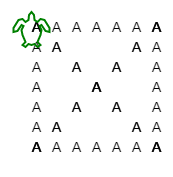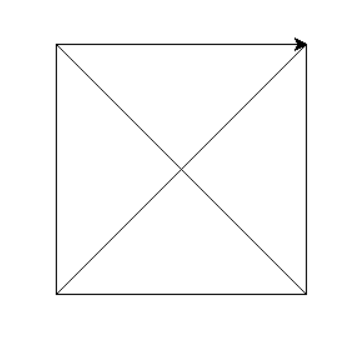Creating a Crossed Square
You are to take input of an integer of one or more and output a square made of any printable character of your choice with a diagonal cross through the centre.
The general idea is for the output to be a hollow square that has a diagonal cross through it.:
Input: 7
Output:
*******
*# #*
* # # *
* # *
* # # *
*# #*
*******
In the above example the '*'s represent the outer box and the '#'s represent the diagonal cross.
Note that the above example uses two different characters so that it is easier to see what the output looks like, your program should use one character only.
Input
An integer of 1 or more, it is guaranteed to be odd.
Output
A square that is made up of a character of your choice with a cross through the middle.
- The cross must be diagonal
- The square may be output via the function or written to output
- Trailing newlines are okay
- Can output as a graphic, diagram or image if you wish too
Examples
Input: 1
Output:
*
Input: 3
Output:
***
***
***
Input: 5
Output:
*****
** **
* * *
** **
*****
Input: 7
Output:
*******
** **
* * * *
* * *
* * * *
** **
*******
Specs
- Functions or full programs are allowed
- You can get input by your preferred means
- Standard loopholes are disallowed
- Programs must work without any additional statements i.e.
usings inC#, they must be included in the entry - You can output from a function or print the result
This is code golf so the shortest solution wins.











0,1,2,3,...? \$\endgroup\$nand print a square of size2n+1. \$\endgroup\$*but for him it will be input 0? \$\endgroup\$1would yield your example for3. \$\endgroup\$